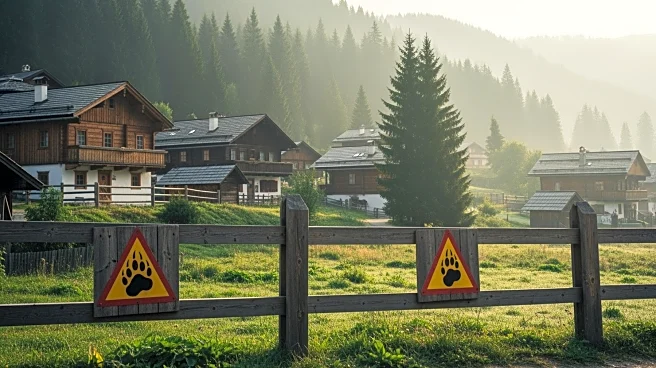What's Happening?
The United States, along with China and Britain, has issued travel advisories warning of increased bear attacks in Japan. This year, bear sightings have surged to over 100, compared to around 35 last year.
A record 220 people have been injured in bear attacks since April, with 13 fatalities, including seven in the past month. The advisories highlight the dangers near populated areas, such as Kyoto's Arashiyama bamboo grove, and note that a park near the U.S. consulate in Sapporo was closed due to a bear sighting. Authorities in Japan are taking measures to deter bears, including using honey-laced traps and drones equipped with loudspeakers and firecrackers.
Why It's Important?
The travel advisories underscore the growing concern over wildlife interactions in Japan, which could impact tourism and local economies. The increase in bear attacks is attributed to a growing bear population and a shortage of natural food sources, exacerbated by climate change. This situation poses a threat to both residents and tourists, potentially affecting Japan's reputation as a safe travel destination. The advisories may lead to a decrease in tourist visits, particularly to rural areas, impacting local businesses reliant on tourism.
What's Next?
Japanese authorities are likely to continue implementing measures to manage bear populations and protect both residents and tourists. This may include increased use of technology, such as drones, and further collaboration with wildlife experts to develop effective deterrents. The situation may prompt discussions on wildlife management policies and the balance between conservation efforts and public safety. Additionally, travel advisories may influence tourists' decisions, leading to changes in travel patterns and preferences.
Beyond the Headlines
The rise in bear attacks highlights broader environmental issues, such as the impact of climate change on wildlife behavior and food availability. It also raises questions about human encroachment on natural habitats and the need for sustainable coexistence strategies. The situation may prompt ethical debates on wildlife management and conservation priorities, as well as cultural reflections on the relationship between humans and nature in Japan.












